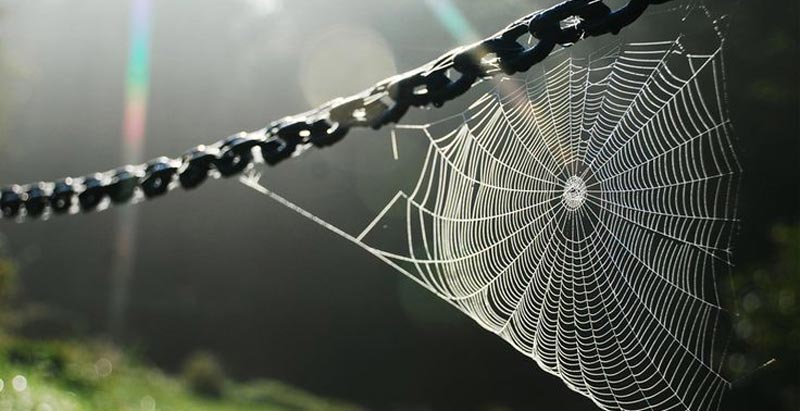Short stackers are often seen as a pest and a nuisance in the modern game. Learn proper short stack poker strategy to dominate cash games.

For many players who regularly sit down at cash tables in the modern game, once they have found some level of comfort with the quality of their
'full stacked 100bb' skills, one of the ways in which they frequently find themselves in awkward situations is when faced with an opponent wielding a stack typically sized between 20 – 50 big blinds. Here I hope to shed some light on short stack poker strategy to help improving players who are looking for some answers on the matter.
The good news is that once we find ourselves in a situation where the money is often going in preflop,
we can use some simple mathematics to make quality decisions. We are also happy to hear that the vast majority of short stackers are players who started their session with a full or close to full stack, but haven't re-bought.
This is an indication that the player isn't following any particular strategy related to stack size, which any competent player will do.This information, along with our
HUD stats should allow us to nail down
exactly what strategy to use against them. No more guessing, or even better, no more nitting it up. Many players fall into the trap of folding too much against a short stacked opponent for reasons such as having a fear of getting shoved on and not knowing how wide they can profitably call. They just have a feeling that they don't want to get involved, assuming that it isn't so important anyway.
Well it is important, as these guys will eat into your win rate if you let them get away with it!
I'll start with some general principles and adjustments we need to make. As the
effective stack size decreases
our implied odds also decrease. This affects the
range of starting hands we should be opening pre flop and also our cold calling range.
The shorter the stack the more extreme your adjustment should be. Rather than posting a number of hand charts for each stack size, I will attempt to give more general advice so you can think for yourself in-game, and do your own EV calculations to make yourself more comfortable.
Changing hand values

For our purposes we should distinguish the starting hands between high
equity type, and low equity type/speculative.
Hands such as KK and AKs are high equity hands, they will often be the best hand on the flop, and will win an all-in confrontation with a high frequency. With high cards you will simply get to showdown with the best hand a lot more frequently than low cards.
Hands such as
54s and
86s are speculative hands which will not be ahead on so many flops when multiple players hit, but when they do hit you have a chance to flop or later make a strong
'5 card hand'. This hand type needs to be playing against a deep stack to maximise its profitability. Even in today's tougher games I still see players cold calling this hand type when a short stacked player has open raised, thinking they can use their post flop skill advantage to make it a profitable move.
Once the
effective stack size decreases below 50bb, the post flop skill edge we might have playing 100bb+ deep has been greatly reduced. We need to be aware when our implied odds have been reduced, and look to tighten up our cold calling
range by removing some or all of this hand type.
One adjustment we can make with this hand type is to
3 bet them in position when a full stacked opponent opens and we have short stacker to our left. This way we side step the increased probability of getting 3 bet if we cold call and having to fold, but at the same time we have a hand which can flop well, even if traditionally small suited connectors aren't at their best playing a pot with a small stack to pot ratio. Here we are also utilising our
fold equity pre flop which may even work out to be more profitable than cold calling without any short stackers present.
Pocket pairs and
suited aces are a special case, somewhere in between high
equity and speculative. For example, if a
25bb stack opens from the small blind and we have
22 in the big blind, we should no longer be looking to flat call hoping to hit a set. We just won't win enough chips even if we can get the small blind to put all of his chips
in the middle to make it a profitable plan of action.
However, one thing that pocket pairs are okay at, is bluffing in an all in situation where we are sure we have at least some
fold equity, and even if we get called we can reasonably expect to have
around 35% equity. Suited aces will have slightly less equity if called, but can be used to extend your bluffing
range if your opponent is expected to fold with a high enough frequency.
Just to clarify, we aren't looking at calling off with pocket pairs and suited aces, having some fold equity is key to making your bluff a profitable move as we will see later when I do some example EV calculations.
Multi-Way Pots

When we do find ourselves playing multi-way with a mix of short and deep stacks we just need to accept that our creative play options against the other deep stacks are almost non existent. Fortunately, in the micro stake games we have an added bonus that many players will adjust terribly against the short stack and sometimes we will have a strong hand, this more than makes up for when we have to miss out on potential value to avoid a short stack exploiting us.
In a way, the need to to play more straight forward, makes our life easier, we get to play a value orientated strategy which gives us less to think about, and less scope for errors which
will reduce our win rate.Open Raise Sizes

Over recent years the average open raise size has reduced from all positions on average, but one spot where we should be as small as possible is from late position with a short stacker still to act. I recommend
2.4bb from the CO and small blind, and a
min raise from the button.This means we lose less when we get re-raised pre flop, and we also make the pot smaller to begin with, making it a less attractive steal opportunity. Most short stackers at the micro stakes play a strategy which is too rigid, meaning that when we use a smaller size to steal with, they are unlikely to adjust enough to counter.
Trapping

It should now be obvious that one of the benefits of playing with a short stack, is that
we can steal in many situations. Even bad players learn quickly that they can get many folds in a variety of situations. One of the most common spots is when there is an open raise preflop and one or more callers. The average short stacker will be shoving all-in with a wide
range and expecting to get plenty of folds.
So it logically follows if we have a premium hand it is
worth considering cold calling instead of the usual squeeze play, and hoping that the short stacker shoves. Not only has under representing our hand helped us to trap one player for all their chips, the original raiser might now feel they can get us to fold by shoving the remainder of their 100bb stack.
Example EV Calculation

There are many different types of useful EV calculations we can do to work towards perfecting our anti-shortstack play. Here is probably the most simple, a method to work out what range of hands we can 3 bet shove all-in against a short stacker.
In our example an unknown 30bb stack open raises to x3bb from the cut-off in a 9 handed micro stakes cash game. The button and small blind both fold
Our hand is ATs and we are in the big blind
First we need to make an assumption about what range of hands villain will call with if we shove. It doesn't matter if you consider this range accurate, the mathematical method is what's important here.
So lets assume villain is opening 25% of hands and will call with 22+, A2s+, K9s+, Q9s+, J9s+, T8s+, 97s+, 86s+, 76s, 65s, 54s, ATo+, KTo+, QTo+, JTo, T9o. This works out to about 50% of his original opening range.
ATs vs this calling
range has
36.24%, leaving villain with
63.76%
Part 1 – What happens when all the chips go to the middle.
Using the standard EV formula
EV = [Probability(Win) * what we win] – [Probability(Lose) * what we lose]
EV = [0.4222 * (1.5bb(the blinds) + 3bb(villains open raise) + 27bb(the rest of villains stack))] -
[0.5778 * (30bb]
= 13.229 – 17.334 = -(4.03bb)
So when we do get called we can expect to lose on average a little more than 4bb
Part 2 – What happens when we take into account fold equity
FE = 50%
Using the same formula as above
EV = [0.5 * 4.5bb] – [0.5 * 4.03bb]
= 2.25bb – 2.015bb
=0.235bb
Now with fold equity taken into account we now have a slightly profitable shove, although I haven't mentioned rake yet which won't change things too much but still shouldn't be ignored entirely when looking at close decisions.
I hope this article was useful for you and I look forward to reading your comments below!
More Top Recommended Articles!
If you enjoyed this article, take a look at some more top recommended articles from PokerVIP!








